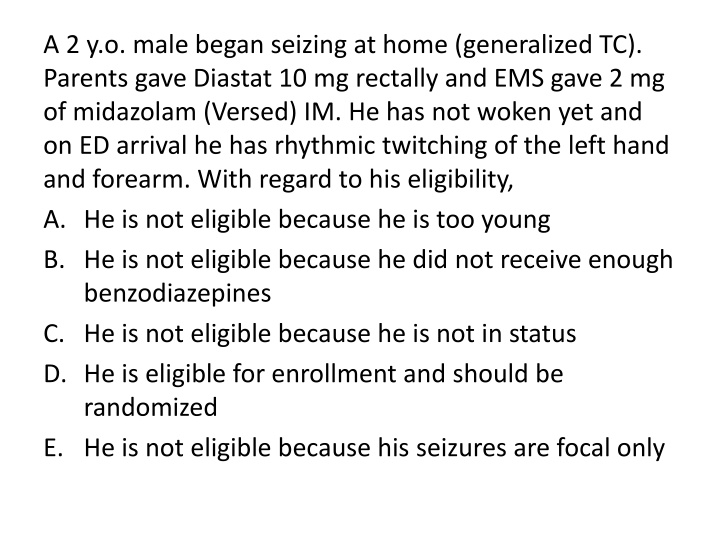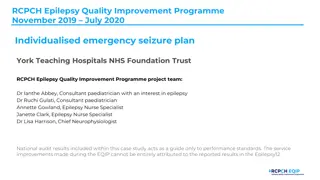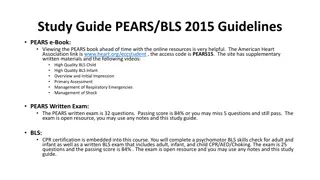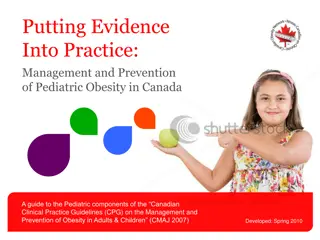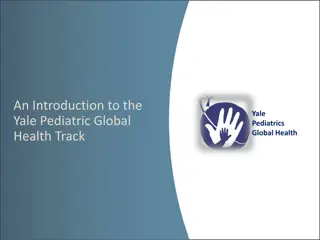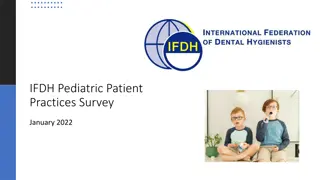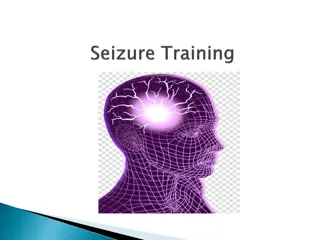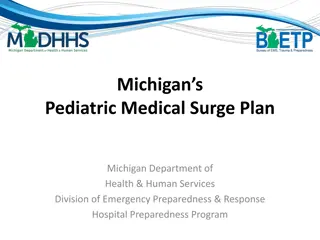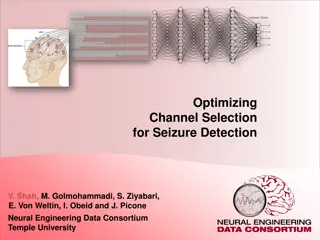Pediatric Seizure Management Eligibility Criteria in the Emergency Department
A series of scenarios involving pediatric patients experiencing seizures at home or upon arrival in the Emergency Department are presented. Each case outlines the administration of benzodiazepines, the timing of seizures, and the patient's eligibility for enrollment in a randomized study based on specific criteria. The cases highlight the importance of timely medication administration and the persistence of seizures despite initial treatment in determining eligibility for randomization.
Download Presentation

Please find below an Image/Link to download the presentation.
The content on the website is provided AS IS for your information and personal use only. It may not be sold, licensed, or shared on other websites without obtaining consent from the author.If you encounter any issues during the download, it is possible that the publisher has removed the file from their server.
You are allowed to download the files provided on this website for personal or commercial use, subject to the condition that they are used lawfully. All files are the property of their respective owners.
The content on the website is provided AS IS for your information and personal use only. It may not be sold, licensed, or shared on other websites without obtaining consent from the author.
E N D
Presentation Transcript
A 2 y.o. male began seizing at home (generalized TC). Parents gave Diastat 10 mg rectally and EMS gave 2 mg of midazolam (Versed) IM. He has not woken yet and on ED arrival he has rhythmic twitching of the left hand and forearm. With regard to his eligibility, A. He is not eligible because he is too young B. He is not eligible because he did not receive enough benzodiazepines C. He is not eligible because he is not in status D. He is eligible for enrollment and should be randomized E. He is not eligible because his seizures are focal only
A 2 y.o. male began seizing at home earlier in the day. Parents gave Diastat 10 mg rectally and EMS gave 2 mg of midazolam (Versed) IM en route. He has been seizure-free in the ED for one hour. He starts to have generalized TC seizures. With regard to his eligibility, A. He is not eligible until he seizes for at least 5 minutes B. He is not eligible because he did not receive enough benzodiazepines C. He is not eligible because his benzodiazepines were too long ago D. A & C E. B & C
A 2 y.o. male began seizing at home earlier in the day. Parents gave Diastat 10 mg rectally at 5 minutes. No additional meds given in ambulance. He arrives at the ED actively convulsing 40 minutes after seizure onset. A. He is eligible because continues to have seizures despite diazepam and should be randomized. B. He is not eligible because his benzodiazepines were too long ago C. He is not eligible because he is too young D. B & C
A 6 year old male with Lennox-Gastaut arrives in the ED with repeated brief convulsions with no recovery in between. Child is currently on Valproate, leviteracetam and clobazam. He is well known to ED staff with multiple visits, often in setting of intercurrent illness. Parents gave 10 mg rectal diazepam gel at home and he received 7.5 mg of midazolam IM in route. He is witnessed to still have brief 30-45 sec convulsions in ED without recovery in between. A. He is eligible because continues to have seizures despite diazepam and midazolam and should be randomized. B. He is not eligible because he is on valproate and leviteracetam C. He is not eligible because he is not in status D. He is not eligible because Lennox-Gastaut is not a localization realted epilepsy E. B & C
A 20 month old male began seizing at home earlier in the day. Seizure had focal onset and generalized. There is a prior history of febrile status at age 18 months and child was felt hot to the touch. Parents gave Diastat 7.5 mg rectally at 5 minutes. No additional meds given in ambulance. He arrives at the ED actively convulsing 25 minutes after seizure onset. A. He is eligible because continues to have seizures despite diazepam and should be randomized. B. He is not eligible because he only received rectal diazepam at home, and needs to receive at least one dose of benzodiazepenes from EMS or in the ED before being eligible C. He is not eligible because his benzodiazepines were too long ago D. He is not eligible because he is too young E. B & D
A 29 y.o. woman is found convulsing outside the back door of a fertility clinic. Paramedics attend and give 10mg IM midazolam following which she is still and sedated for 15mins, but the time they arrive in the ED she is convulsing again and a 2nddose of midazolam is given A. She is not eligible because she may be pregnant. B. She is not eligible because the onset time is unknown C. She is not eligible until 5 minutes after the 2nddose D. She is eligible and should be randomized E. She is not eligible until she has been scanned and an acute cerebral event excluded
An 83y man with known Alzheimers disease collapses in his residential home with a witnessed first generalized convulsive seizure which was terminated after 15mins by 10mg PR Diazepam. He is brought to the ED and 20mins later hasn t regained consciousness. O/E his GCS is 6/15 and he has rhythmic nystagmoid eye movements. A. He is eligible now and should be randomized. B. He is not eligible due to his Alzheimer s disease C. He will only become eligible if he has a further overt convulsive seizure within the next 10 minutes D. He is not eligible as his seizure has terminated E. He is not eligible as he will likely need intubation/sedation for urgent brain imaging
A 28 y.o. woman with cognitive impairment and frequent GTC seizures was found convulsing by her parents and given 10 mg rectal diazepam. Seizure activity continued for another 5 minutes and EMS arrived 10 minutes later and gave 10 mg IV diazepam. She arrives in the ED 5 minutes later and has a subtle whole body jerk every 3 seconds. A. She is eligible because she continues to have seizures despite diazepam and should be randomized. B. She is not eligible because she has received enough benzodiazepines yet. C. She is not eligible because seizure activity is too subtle. D. She is not eligible because she has been seizing too long.
A 54 y.o. previously healthy man had a GTC at 10:50 a.m. and was seen in the ED and discharged. He had a second GTC at 18:07. He had a third en route to the ED. He is unresponsive in the ED with myoclonic eye and face movements unresponsive to 5 mg IV midazolam given on arrival and again 25 minutes prior. A. He is eligible because he continues to have seizures despite midazolam and should be randomized. B. He is not eligible because the last dose of benzodiazepines was too long ago. C. He is not eligible because seizure activity is limited to the face. D. He is not eligible because he has been seizing too long.
